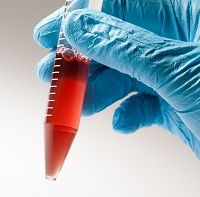Article
Sickle Cell Disease: Potential Biomarkers for Chronic Pain
Author(s):
Pain crises are common in those with sickle cell disease, but now new research may have identified biomarkers for patients whose pain becomes chronic.

Pain crises are common in those with sickle cell disease, but now new research may have identified biomarkers for patients whose pain becomes chronic.
Nina Kuei, BS, from Georgia Regents University, and colleagues analyzed potential characteristics and biomarkers of chronic pain in sickle cell disease. Kuei will discuss the findings at the 57th American Society of Hematology Annual Meeting (ASH 2015) in Orlando, Florida.
Chronic pain was defined as pain more than 50% of days over a six month period. The analysis included 12 patients with sickle cell disease and chronic pain, 17 patients with sickle cell disease without chronic pain, and 9 African American healthy controls. Notably, those of African descent make up the majority of sickle cell disease in the United States — one out of every 13 African American children is born with the sickle cell trait and one out of every 365 are born with sickle cell disease, according to the National Institutes of Health.
- MD Magazine is on Facebook, Twitter, Instagram, and LinkedIn!
The researchers collected plasma tryptase and substance-P levels from all of the participants. The average levels for each group were as follows:
- Tryptase (pg/ml):
- Sickle cell disease with chronic pain: 1388.6+519.8
- Sickle cell disease without chronic pain: 1023.64+221.04
- Healthy controls: 768.9+416.16
- Substance-P (pg/ml):
- Sickle cell disease with chronic pain: 7221.1+7742.7
- Sickle cell disease without chronic pain: 5983.1+3473.0
- Healthy controls: 3939.7+1350.1
“The difference in substance-P levels did not reach significance across groups by ANOVA or in pairwise comparison between groups. However, tryptase levels were significantly different across groups by ANOVA,” the authors clarified.
Patients with sickle cell disease and chronic pain had a higher average age (41) when compared to those without chronic pain (32.2). Opioid use was, not surprisingly, significantly higher among those with chronic pain compared to those without (11.45 mg a day vs. 2.92 mg a day). Pain pressure algometer data, however, were not much different between the groups at the trapezius, ulna, and masseter sites.
So what does the data mean? Well, it specifies that patients with sickle cell disease are more likely to have chronic pain if they are older, use more opioids, and have much higher tryptase levels.
What to Read Next >>> More from the ASH 2015 Annual Meeting





